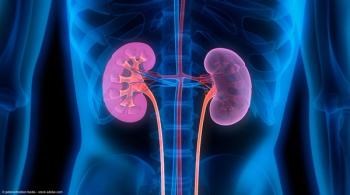
Investigators assess safety of same-day discharge for urologic procedures
"We need to have some safety data to see if this is actually the right thing to do, because there's been some pushback, at least in some publications of the fact that we're pushing the burden of recovery at home," says Andres F. Correa, MD.
In this video, Matthew Epstein, MD, and Andres F. Correa, MD, highlight the background of the study, “Balancing patient safety and early post-operative discharge: An ACS-NSQIP analysis of post-operative complications after minimally invasive urologic surgery.” Epstein is currently a chief urology resident at Temple University Hospital, and Correa is an assistant professor of urology at Fox Chase Cancer Center in Philadelphia, Pennsylvania.
Video Transcript:
Epstein: There are 2 key pieces of background information that are important that went into the conception of the study. The first being the massive switch from open surgery to minimally invasive surgery. We've seen, especially for radical prostatectomy and partial nephrectomy, huge improvements in length of stay. There was a Johns Hopkins institutional review that showed in 1991, the length of stay after prostatectomy was about 8 days. Then, 20 years later, in 2010, it improved all the way down to 1.5 days. This is largely due to a change of approach from open to minimally invasive, as well as some potentially [Enhanced Recovery After Surgery] ERAS protocol changes.
Secondly, a key background piece of information is the changing health care landscape. We're seeing a large change from fee-for-service to bundled payments or episode payment models. It's already been piloted for some common surgeries like CABGs by Medicare. We've seen success in the past, in terms of improvement in length of stay from the UCLA/Kaiser Permanente negotiation that happened in the 80s, where they implemented bundled payments for a kidney transplant. A lot of the improvements in length of stay is attributed to financial incentives. The cost savings specifically for urology and performing radical prostatectomy or partial nephrectomy as an outpatient procedure is on the border of a few thousand dollars. Following this trajectory, some surgeons have started implementing the same-day discharge policies at their institutions to continue to push the envelope. And we've already seen a few studies, some small prospective series and some retrospective studies as well, that have looked at the safety of same-day discharge.
Correa: And just to add to that a little bit, I think that the COVID pandemic generated a little push to that too. There was a little bit of a push to send people home and not keep people in the hospital, trying to get patients home and do this pseudo-elective surgery more electively. A lot of hospitals instituted this policy because they wanted to take care of cancer operations, but not get the patients into the hospital. There was really no room to house these patients because of the wards being overwhelmed with the COVID patients, and [they] didn't want to get these patients exposed to a possible COVID environment. So, I think that a lot of these measures to make same-day surgery procedures, as Matt said, has some financial implications for both the hospital setting and insurance companies. But I think that COVID also put a little bit of an override. Our impetus here was to say, is this first safe? We need to have some safety data to see if this is actually the right thing to do, because there's been some pushback, at least in some publications of the fact that we're pushing the burden of recovery at home. Is that the right thing for the patient? And we don't know that. When it comes to the burden of recovery, just being in pain or being in discomfort is one thing, but overall safety is even more important. That was one of the first things that we wanted to look at, and Matt will talk more about how we went about it. But I mean, using the NSQIP makes a little bit of sense, because it looks at complications associated with procedures in a big database.
This transcription has been edited for clarity.
Newsletter
Stay current with the latest urology news and practice-changing insights — sign up now for the essential updates every urologist needs.


















